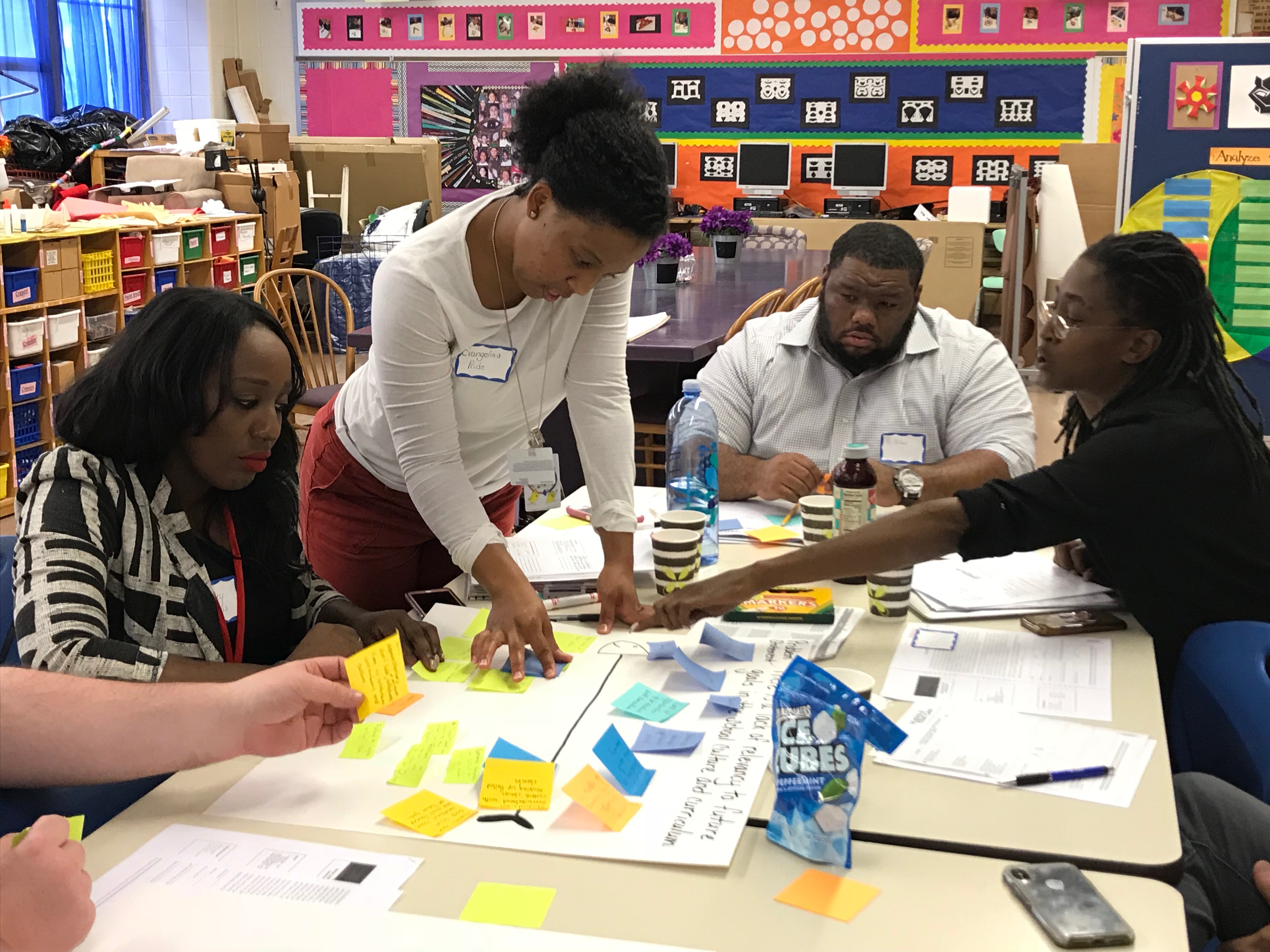
STC Newark: Reimagining Education Through Real-World Learning
Schools That Can (Newark) (STC) is all about making our children’s education more impactful, more real. The STC approach is worlds away from the Reading, Writing ‘Rithmetic approach. Because rote learning doesn’t teach kids how to think. It only teaches them how to memorize and regurgitate facts. That won’t cut it in today’s technology-driven society, where creative innovation is what puts one ahead of the pack in the workplace.
We know our kids deserve this kind of education, taught by educators who care enough to improve the way they impart knowledge to their students. That’s why Kars4Kids gave STC Newark a small grant. We spoke to Manager of School Programs Tiffany Jackson to learn more:
Kars4Kids: The Schools That Can website states that you reimagine education through real-world learning. What are some real-world learning practices?
Tiffany Jackson: Real-world learning is all about making education hands-on and relevant for students. We believe it is crucial to education that students are learning in interactive ways that allow them both to relate to the material AND develop real skills in the process.
A few years ago, STC released our Real-World Learning Rubric. This tool allows schools to assess how they are doing with advancing quality real-world learning in their schools. There are six descriptor areas that range from sharing authentic student work to preparing students for future careers to using resources in the school creatively to embrace real-world learning. The rubric is a great place for schools (and anyone!) to see what high quality real-world learning looks like in practice.
Kars4Kids: Tell us about your annual STC Forum. Can you give us an example of the panels and workshops available at a forum? How many participants attend?
Tiffany Jackson: STC is a national organization with over 170 K-12 district, charter, and independent schools participating in our network. Most of our programming happens at the local level in cities like Newark where we have a concentration of schools and staff on-the-ground to lead programs. In order to get everyone together and share out nationally, we hold an annual National Forum that brings together teachers, school leaders, community partners, funders, and even students from across our network to share best practices, network, and improve real-world learning skills.
This year, the 14th Annual STC National Forum will be held here in Newark on April 30-May 1. Our theme is “Advancing Culturally Relevant Real-World Learning” and registration is currently open. Anyone can attend, even if they are not part of our network. We expect a few hundred people from across the country to be there. Registration and more info can be found here: https://www.schoolsthatcan.org/2019-stc-forum/.
Kars4Kids: You offer the Career Pathways program to high schoolers. How is a student enrolled in this program? Is it difficult to get a 9th grader interested in career options/the future?
Tiffany Jackson: Our Career Skills Program works with high schools to help guide students through career readiness programs. One way we do this is through our Career Skills CTE Program where we work directly with individual high schools in helping them build out robust, high-quality career and technical education (CTE) programs that prepare students for middle- or high-skill careers that are anticipated to be in high demand when they graduate. These programs are integrated into the school – so students that are enrolled into the program at their school get to take part in technical courses, skills-building sessions, site visits to area employers, mentorship and internship opportunities, career student organizations, and more.
Depending on that CTE program’s industry focus, students might graduate high school with a certification they can use in that career and/or they might earn college credit while still in high school. But the most important thing to remember with CTE is that this is NOT an alternative to higher education. In the past, people saw “vocational” school as something for students who were not planning to go to college. Yet, studies and trends have shown that it is quite the opposite – high-quality CTE programs engage students in ways that supplement a student’s academic classes.
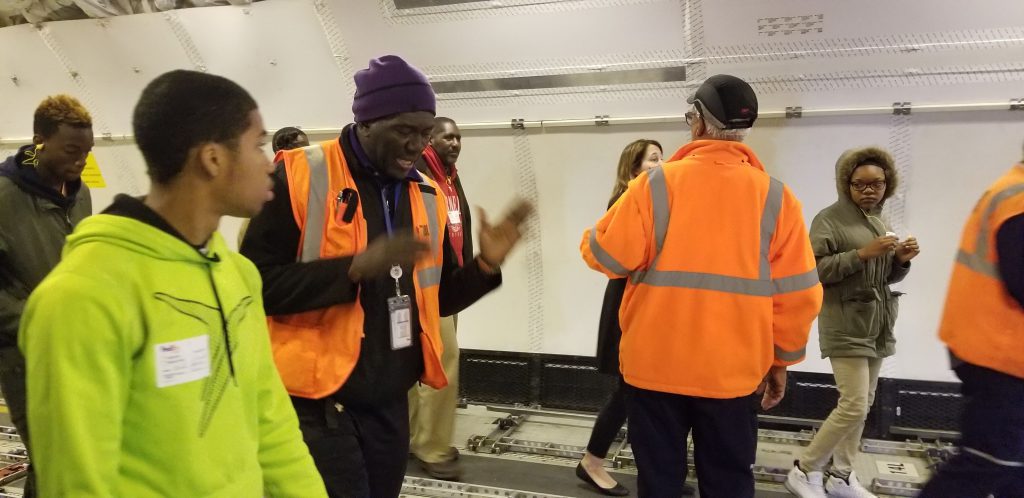
Because students have some fun hands-on CTE classes during the day, they may be more engaged in their more traditional academic classes. Plus, as CTE programs have advanced into more middle- and high-skill career pathways, more and more students are taking advantage of these programs (and more and more schools are trying to build out these programs for their students). So the goal for any student graduating from a CTE program is that they have an option – they can continue their education and/or they can go straight into the workforce, and if they pick the latter, they already are prepared to go straight into a specific career they studied in high school.
Even if a student completes the CTE program and decides that industry is not for her or him, just the process of going through a sequential CTE educational experience gives the student great career readiness training and career exposure. Therefore, our Career Skills CTE Program helps high schools create these awesome programs in high demand industries like advanced manufacturing, cybersecurity, and health careers. That is just one way we work in our Career Skills Program to support high schools and their students in career awareness and preparation.
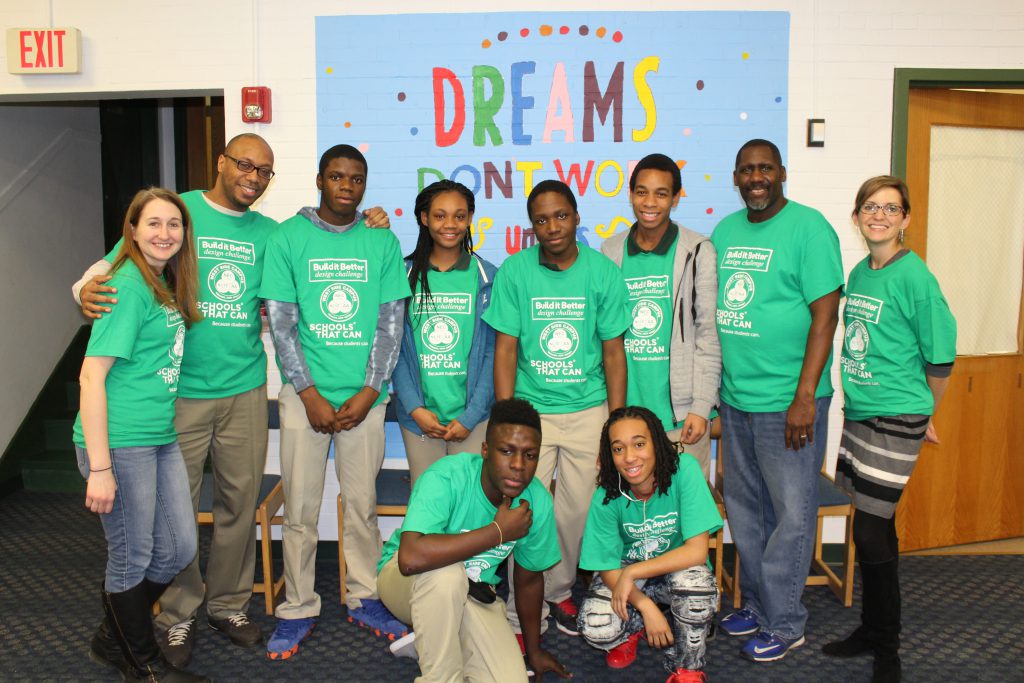
Kars4Kids: Your Education to Employment (e2e) Gap program has an interview night to learn how to interview with companies for a job. What are some of the tips students learn about the interview process?
Tiffany Jackson: We are super excited that this year is our 4th Annual Bridging the e2e Gap Program. In this program, 50 students from 10 Newark high schools are guided through a five-month job application process that mimics real internship and job application processes they will face in the future. A crucial part of this is the interview night where, in addition to participating in various workshops, students have interviews with three potential employers, one of which they will spend a day externing with soon after.
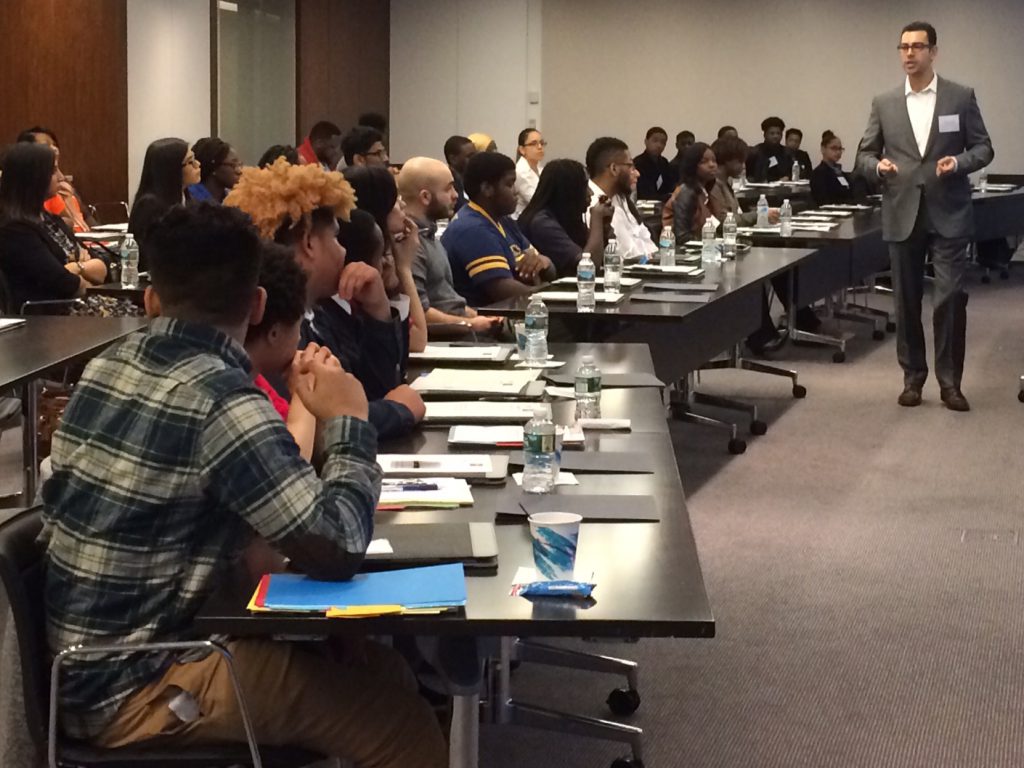
To prepare students for the interviews, they participate in a workshop and luncheon sponsored by McCarter & English law firm where volunteers from the firm and area law schools help students with their resumes and cover letters. As part of that day, students go through a workshop on interview skills, watching videos of “dos and don’ts,” and receiving tips on how to prepare for their interviews. These tips range from preparing for questions that are often asked to how to dress and present oneself to what types of questions to ask at the end of your interview.
Our interview night is really exciting – students take this process very seriously and you can find them pacing the hallways, practicing their answers before they head in for their interviews. It is a great night for all and, even if they feel they struggled during their interview, this is a safe opportunity for them to try – no matter how much they might struggle during the interviews, all students get to participate in an externship and continue to practice those skills.
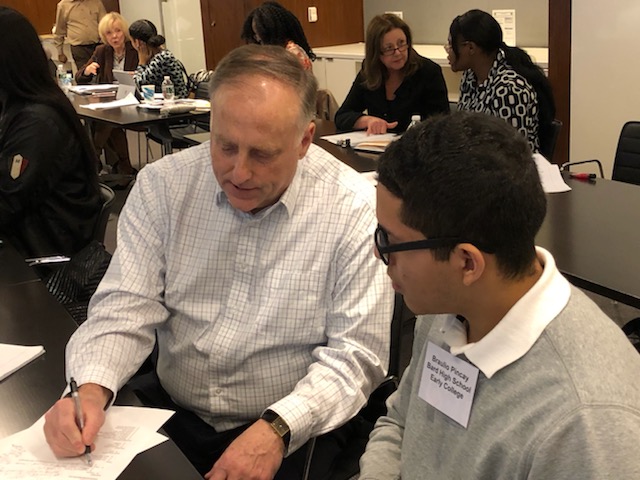
Kars4Kids: Can you tell us about some of the ideas that have come out of Design Day? Are any of these ideas implemented?
Tiffany Jackson: Each year for our Design Day Challenge & Celebration, we work with the Newark Community Economic Development Corporation to identify a real challenge facing the City of Newark for which the viewpoint of students is needed to help solve the challenge. The teams of students, teachers, and corporate volunteers not only spend hours designing a solution to the challenge, but they then present those designs to a panel of judges. The judges include decision makers related to that issue and the ideas presented are then included in the planning process for that development in town. For example, our first year, teams designed family-centered, themed sections of a new park being developed. Judges included the landscape architect firm contracted by the City of Newark to design the park and officials from the city’s economic development arm.
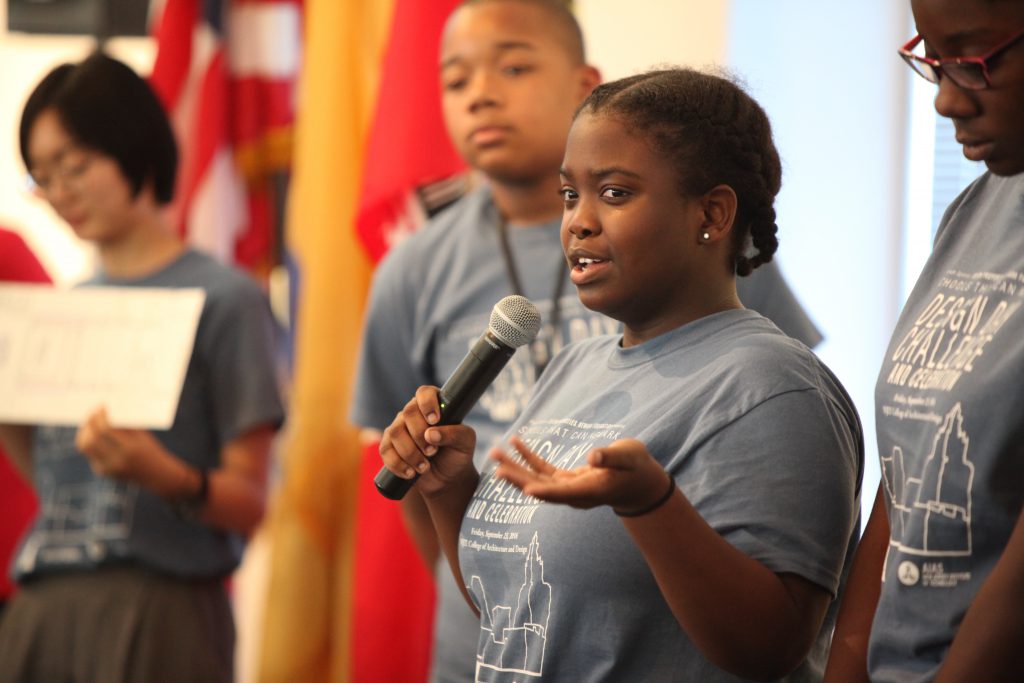
Two years ago, the challenge was to design an app that would allow residents to interact more with the city, providing more methods to communicate with city residents about programs and resources. After that Design Day, the city launched a series of new kiosks throughout the city and has been integrating some of the ideas from the student teams into the technology.
Last year, our teams created a new design for Washington Park, one of the oldest parks in Newark that will soon be redeveloped. The head of the Washington Park Association informed us that the preliminary designs are being updated to integrate some of the student design elements. So Design Day really is a chance for students to make concrete impact in their community and see their changes come to life.
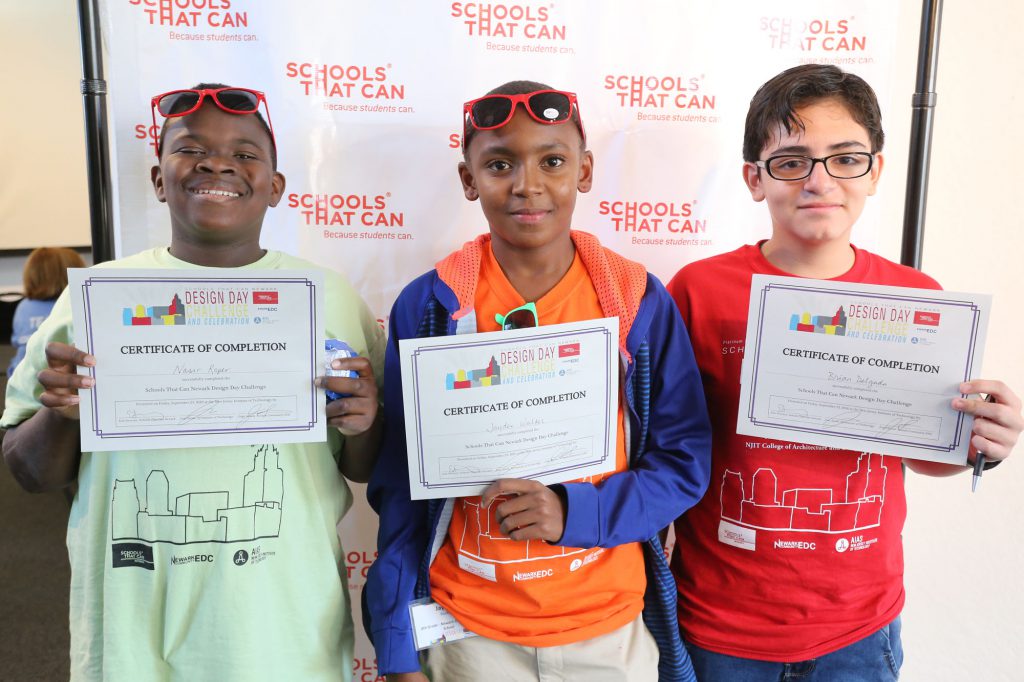
Kars4Kids: Schools That Can has offices in 5 cities. Can you tell us what is unique about Schools That Can, Newark?
Tiffany Jackson: STC is a national organization with members all over the states, but we do indeed have offices in 5 cities that have anywhere from a one-person part-time team to a three-person full-time team. The programming offered by each office varies depending on the needs of that city’s schools as well as the capacity of the office. STC Newark is one of the original sites for STC and we have proudly led the way with designing and developing many of the programs that are now implemented in other cities.
For example, our Advisory Board designed the first Design Day as a way to get students and corporate volunteers to work together. Design Day has since expanded to NYC and Chicago. Another example is Bridging the e2e Gap. That program was envisioned by a group of staff members from different Newark schools who wanted an opportunity for students and schools to engage more directly with Newark employers. Now, four years later, the program has expanded to our NYC office and we are piloting new versions of it here in Newark. Or, another example is the Career Skills CTE Program. When this opportunity came up a few years ago, STC Newark volunteered to pilot it. Now it has expanded to several schools in Pittsburgh, with more scaling happening here in Newark as well. So, though all STC regions are important pieces to the development of our organization as a whole, we are proud that STC Newark has been where so many of our organization’s signature programs were created, designed, and then expanded.
Kars4Kids: What happens at a PLG gathering?
Tiffany Jackson: PLGs allow for teams of educators from a school to meet together to address a common challenge that all their schools are facing. PLG teams are guided through a 10-month facilitated process that begins with a launch strategy session in September or October and ends with a culminating celebration in May or June. At that initial session, the teams are together for several hours, being led through a process loosely based on network improvement science. They begin by identifying an overarching question regarding a topic like expanding real-world learning or making schools more culturally relevant and then do a root cause analysis to figure out all the reasons why this problem exists. They then select one of those causes and switch it from a negative cause of the problem to a positive possible solution that they want to accomplish by the end of the year. Then each team takes that proposed solution (or aim statement) and creates a plan as to how they plan to reach that goal by the end of the year in their school.
For example, say the problem statement is “There is not enough real-world learning in our schools.” Then, in the root cause analysis, maybe there were a few main categories of the causes that were brainstormed such as knowledge (teachers don’t know how to create real-world learning units, teachers don’t have enough content knowledge, etc.), resources (school schedule is too tight to add in real-world learning, the curriculum is focused on the test so no room for new projects, there is no money for this, etc.), and other categories. Then all the teams together pick just ONE of these causes such as “the curriculum is focused on the test so no room for new projects” and turn that into an aim statement such as “By June 2019, our schools will have added at least one new real-world learning project in each subject for each grade.” Then each team then takes that aim statement and creates a plan as to how they will do that in their school specifically.
When our PLGs gather throughout the year, teams share out how they are doing on reaching this goal. They celebrate each other’s wins. They give feedback to each other. And throughout it all, they get coaching from our team.
Perhaps one of the most amazing things about PLGs is that it brings together educators with different levels of experience who come from all sorts of schools (elementary, middle, high, district, charter, independent) from throughout Newark so that they can all work together to solve a common challenge. It is rare that educators get to interact with their peers at other institutions and equally rare for educators to have an opportunity for dedicated time to dig into some of these systemic challenges that are important, yet for which there never seems to be time. Our PLGs build a community of educators who then support each other and build up their schools.
Kars4Kids: What’s next for Schools That Can, Newark?
Tiffany Jackson: We are in a very exciting moment in our organization. Soon, we are bringing on a new team member to lead our Career Skills Program. We see this program expanding in the future and are excited to expand high-quality career preparation to more schools and students. We also are partnering with the City of Newark, Summer Youth Employment Program, and various other organizations in workforce development and education to create more streamlined and coordinated career pathway opportunities for all Newark youth. As we increase our team, we can continue to increase our reach while maintaining very high quality programming to reach thousands of Newark youth. It is an exciting time at STC Newark!